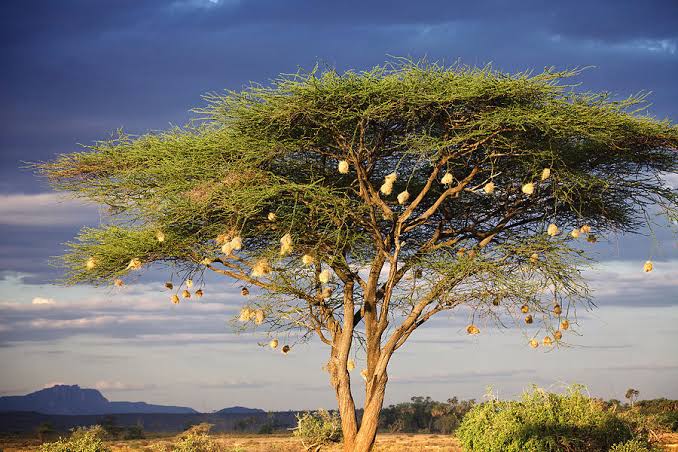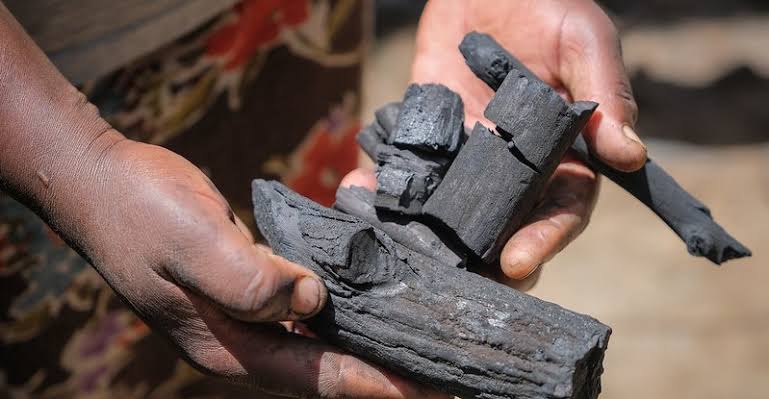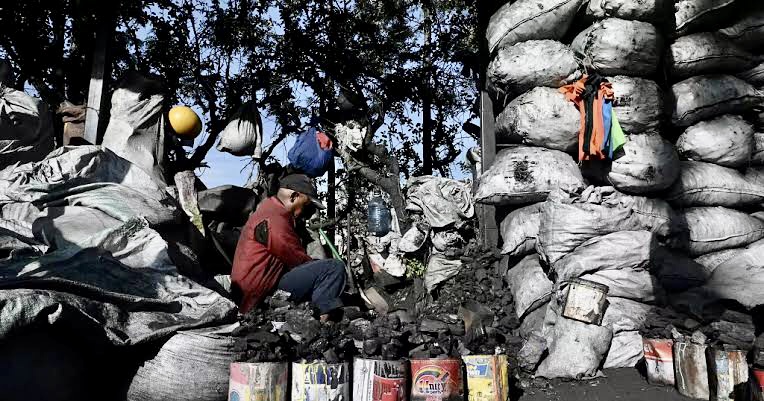
Faith Nyasuguta
As global prices hike, the cost of buying cooking gas is becoming unbearable for the majority of Kenyans with the chase for alternatives leading some straight into the forests, for charcoal.
Charcoal, an amorphous form of carbon obtained when the wood is burned in minimal oxygen, is proving to be the easiest – yet more damaging – alternative.
In sub-Saharan Africa, indigenous trees including the Acacia, provide high-quality charcoal which attracts a good price at the market.

Currently, people neighbouring state forests are illegally logging and kilning protected forests in earnest to get income, while consumers in rural homes, towns and cities are looking for alternative fuel to cushion highly-priced cooking gas.
Kevin Kyovi, 27, a resident of Kisasi in Kitui county, wakes up early in the morning with a panga and an axe.
He fells at least two mature acacia trees and before two days are over, he’s made over 15 sacks of charcoal from a single kiln.
With charcoal prices having shot from 400 to 700 Kenya shillings ($3.39-5.94 USD), Kyovi says business has been flourishing since fuel and gas prices started skyrocketing.
“Since cooking gas prices started going up, charcoal demand is on the increase,” he says.
“When gas prices were low, I used to sell only one sack of charcoal per-month. But now, charcoal has a lot of demand, and many customers are coming, forcing me to increase production.”
Among Kyovi’s customers, Caroline Mwaniki says she has found herself with no choice.
The mother of one in her mid-twenties says she had to shift from a big gas cylinder to a smaller one yet the costs are still not adding up.
“So, I went and bought this small one to see whether it could save my situation. But suddenly, I have noticed it’s also on the increase. So, I have decided to opt for charcoal,” she says.

Mwaniki’s decision has directly translated into a loss of business for cooking gas vendor Justus Thitu.
Thitu has been forced to scale down by almost 90%.
“I used to stock 50 cylinders of 12 kilos and 50 cylinders of 6 kilos, but it has gone down to the extent of stocking 2 cylinders of 12 kilos and 8 cylinders of 6 kilos.”
“So, if the business goes this way, I will eventually close and end up losing my source of livelihood. So, we are pleading with the government to intervene in gas prices because there is no profit, and we will only close the shop,” he says.
A 12-kilo cylinder rose from 1,600 Kenyan shillings ($13.57 USD) in 2021 to 3,000 ($25.44 USD) Kenyan shillings this year, more than twice the price.
A 6-kilo cylinder increased by the same rate from 700 Kenyan shillings ($5.94 USD) to 1,600 ($13.57 USD), edging out most of low-income customers.
Options for Thitu to remain in business could mean some form of illegality – either close down or sell charcoal.
In Kenya, commercial sale of charcoal attracts punitive fines.

“Many customers have decided instead of using gas, they go for charcoal. So, I am wondering whether to do away with the gas business and start selling charcoal, of which the government has banned the sale of charcoal, specifically in our county, the charcoal bill is very punitive, you can’t stock charcoal in a shop. And even that charcoal trade means you cut indigenous trees and it leads to deforestation,” says Thitu.
Now, uncontrolled logging is adding to the tidal wave of climate change, the imminent danger facing indigenous trees could even be extinction.
Victor Boiyo, an environmental governance and management expert at Nazarene University, blames low cooking gas adoption on the Kenyan government’s pricing policy.
“The prices of petroleum products and LPG has been skyrocketing. And this has by far and large affected the choice of fuel that is being used, especially in rural Kenya. As a result, so many households have left the use of LPG and they are going back into fuel and charcoal burning,” he says.
Studies have identified charcoal production as one of the main drivers of deforestation and forest degradation in nearby Zambia.

The traditional methods of making charcoal lead to high carbon emissions and use up wood resources.
With the target mostly falling on indigenous trees, the loss of biodiversity threatens the existence of animals and other plants that depend on the plants.
“We might be experiencing one of the worst catastrophes in regards to destructions of our forests and destructions of our habitats, and as a result, we may not be able to achieve our targets in so far as curtailing climate change is concerned,” warns Boiyo.

Economists warn of further gas price increases throughout the year, which will hit consumers already dealing with rising food, electricity, and transport costs.
The biggest impact will be felt by the poor, who are already facing economic hardship.




